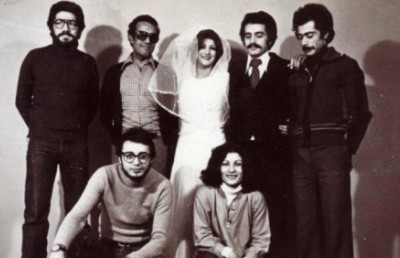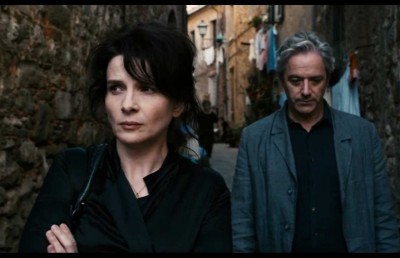Embers: Meditations on Memory
Fantasia 2016
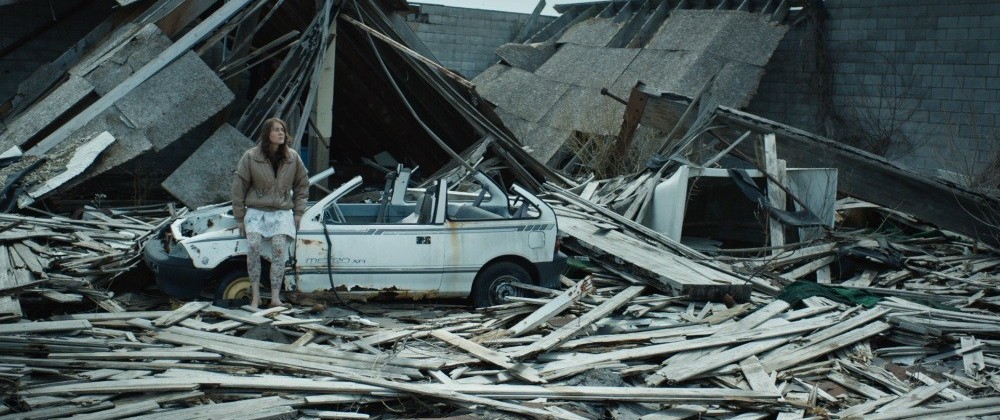
Ember: noun em·ber \ˈem-bər\ Embers plural: A small piece of burning or glowing coal or wood in a dying fire.
What is memory? How does it shape us? Without it, are we still this being called “human,” can we grow, change, survive? What are we when everything we know is stripped away, what do we hold onto? Though I have often pondered these questions, usually whilst in the depths of an existential crisis, they followed me like persistent spirits, haunting me for months after viewing Claire Carré’s debut feature Embers (2015), which showed at the Fantasia International Film Festival in 2016, their 20th edition. With my deep love of post-apocalyptic narratives, I was intrigued by the film’s understated trailer depicting a disintegrated world, peopled by seemingly animalistic characters with the short-term memory of a particularly vapid goldfish. I’ll admit, I was almost put off by the decidedly twee vibe of the whole thing but the film’s setting was too gosh darn alluring for me to resist.
Embers takes place in a world struck down by a mysterious ailment that has left all its inhabitants unable to retain any memories. A small handful of survivors rove across a ruined city, living each day as if the previous never existed. The film intertwines five narratives: a pair of lovers, the Guy (Jason Ritter) and the Girl (Iva Gocheva), destined to forget each other over and over; a small, almost feral boy (Silvan Friedman), singing and skipping his way across the debris; a once brilliant scientist (Tucker Smallwood), desperate to find the way back to his mind; an angry and menacing teenage boy (Karl Glusman), intent on destruction; and Miranda (Greta Fernández), a young girl safe from memory loss but trapped in a bunker far beneath the earth.
If you went into the film expecting the usual grimdark, violent fare that tends to go hand in hand with the post-apocalyptic genre, the first minutes of Embers reveal instead to be the opposite: relying on an understated yet gritty tone suffused with an dream-like quality. The sound of a man’s voice lists methodically all the beautiful, everyday things he never wants to forget: the mole on the back of his lover’s knee, the first time he held his son, moments that most humans can relate to in some form. This litany of memories carries the viewer into a crumbling but light-suffused room where two apparent lovers are waking up. It seems ordinary enough, the only trouble is, they don’t seem to recognize each other. The calmness with which the two react to this revelation sets the mood for the rest of the film. Even in the darkest, strangest, most violent moments, a pervasive calm settles over the story. A calm that is at times meditative and at times disturbing in its ability to make the viewers themselves forget that they are watching the end of humanity unfold. A murder becomes a quiet reflection on the inevitable end of a companionship. A violent chase morphs into a quietly surreal encounter with a white horse. Even a rape and a suicide attempt become gray light and slowly dried tears as the violence gives way to the bliss of forgetfulness. Only the viewer is left with the sense of unease as we remember the traumas experienced by the survivors, while they themselves forget and move on, relatively unperturbed by their plight. We are left with an interesting philosophical quandary: would you rather live with your memory intact, remembering everything—the good, the bad, and the tragic—or is ignorance indeed bliss?
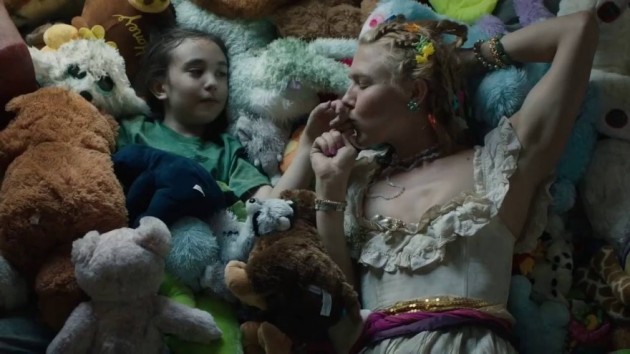
As Embers meanders its way through a day in the life in this strange world, I got to thinking about memory versus instinct and human versus non-human, with the two being inextricably linked. Though all but dear Miranda, tucked away in her bunker, cannot remember their lives before waking, including their names, something deeper remains in their subconscious: the evolutionary call of instinct, a memory borne of habit, and even at times the whispering hint that their original memories are perhaps still locked away somewhere in their minds. Our ragtag band of survivors know the basics: to eat, to put on a jacket before going outside, to make love, to communicate in some way with the others around them, to forage, to search for shelter, to attend to wounds, to avoid trouble, to make a fire. All these things remain locked in their brains the way they do in all living creatures that are constantly striving for survival in this chaotic world. So, too, do they remember other, less concrete things. Though the boy and the angry young man seem to have forgotten how to speak, the rest of the characters remember more than just the rudimentary of language, even, in the case of the Girl, remembering other languages than the one that flows naturally from her. The Guy and the Girl remember, albeit with some vagueness, that they care for each other. The woman the boy comes across in her fortress of toys remembers the structure of basic storytelling, complete with “Once upon at time,” and “The end.” She says to the boy, “nothing bad has ever happened to me” as a shadow passes across her face, indicating that perhaps the memories of some past trauma are not “lost” but simply buried. The film is rife with these moments, evidence that this concept of “memory” is so deeply rooted in our psyches, it’s impossible for it to disappear completely.
Often these hints of memory are connected to objects that are signifiers of a lost society and humanity of the past. A watch, an umbrella, a scrap of fabric, a collection of books that might just hold the key to recovery, a toy, a bicycle—all these things that hold within them a fragment of the time before. Carré’s use of objects is brilliant in that she introduces such ordinary everyday items to convey a sense of loss that is not fully expressed by the people encountering them. A toy becomes the embodiment of the loss of family life and childhood; the simple umbrella, wielded in a strange throwback to Singing in the Rain, portrays the loss of culture; a wristwatch, obvious in its meaning, activates one of the most poignant moments in the film. An elderly gentleman, having come across the boy wandering alone, tries to explain the meaning of time and space: “Now is now. And now is now. Now we’re here. And now we’re here,” he repeats as they walk across a broken landscape that is no longer structured by the construct of time.
On the other side, in the depths of the bunker, objects are again used but to a different purpose. In this environment where memory loss is not an issue, objects suddenly become traps rather than touchstones. Miranda’s father (Roberto Cots) insists that as long as someone is still appreciating art or music, humanity can continue. But to Miranda, the entire exercise is pointless. Why bother, if she is only playing the cello for her father? If the paintings are viewed by one man but there are no future generations to leave them to? The device she carries that constantly checks her memory, where she can listen to music and view photos of her childhood, simply becomes a purveyor of existential angst, keeping her looped in a meaningless routine as she ponders what is life, what is memory, without other people to share it with? In essence, what is life without actual life? Her safe haven and the objects of luxury that surround her become a prison as she reaches the conclusion that emptiness of mind out in the real world would still be better than the emptiness of life in the bunker.
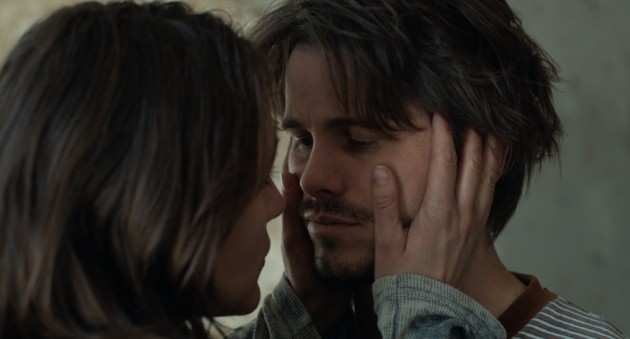
Though the life of the survivors is often fraught with difficulties, the contrast of Miranda’s life in the bunker hints at the true philosophy of Embers. Between moments of danger and melancholic grittiness, life outside is interspersed with bright, colourful scenes that infuse the screen with their warmth and humanity: idyllic scenes of learning to ride a bike, of genuine laughter, of tentative but joyous singing, of love blossoming amongst the ruins. For Miranda, her world is awash in gray. There are no outbursts of pure happiness or vibrancy. Even art and music, once considered beautiful, are tempered by the oppressive surroundings of concrete walls. Though there is enough room to debate what we would become if we were stripped of all our memories, Carré’s Embers suggests that whatever makes us human goes beyond remembrance, and that even without it, we’ll still have a spark, an ember, that will continue to glow just when we think that all hope is lost.



